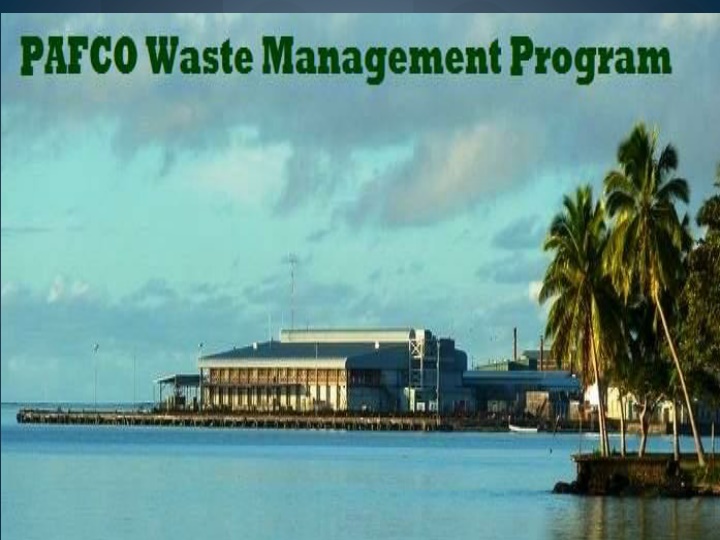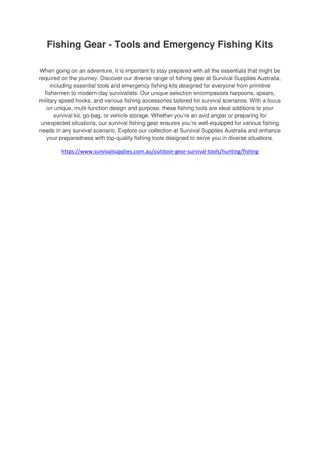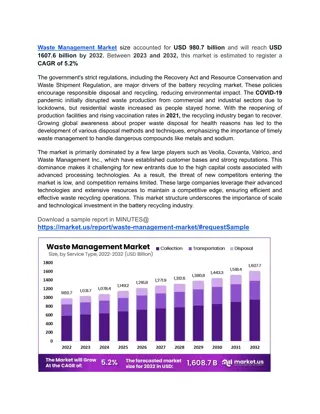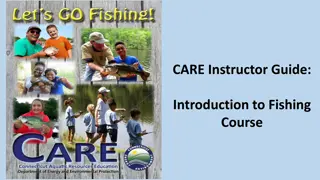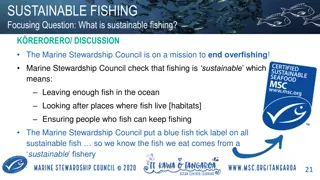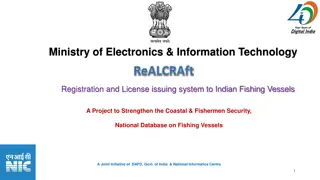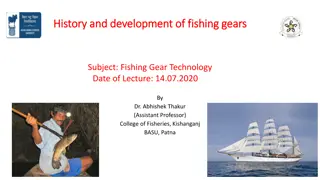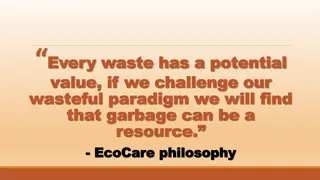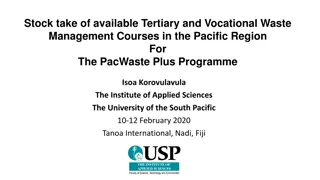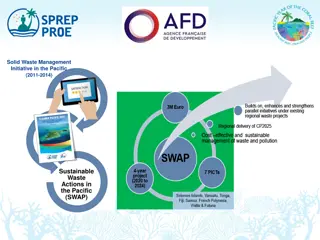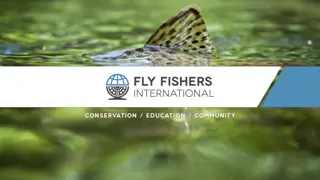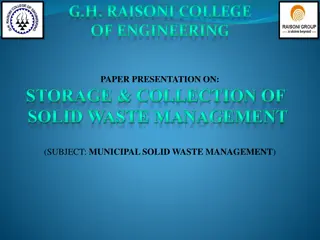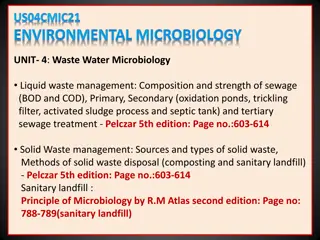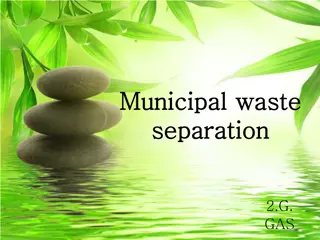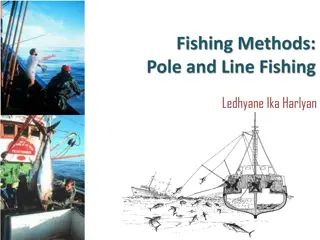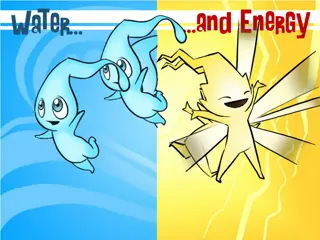Overview of Pacific Fishing Company Limited and PAFCO Waste Management Program
Pacific Fishing Company Limited, established in 1964, plays a significant role in the fishing industry in Fiji, focusing on canned tuna products and more. PAFCO Waste Management program details the process of converting fish scraps into valuable by-products. The company's history, products, workforce, and waste management flow chart are highlighted, showcasing its contributions to the socio-economic development of Ovalau Island.
Download Presentation

Please find below an Image/Link to download the presentation.
The content on the website is provided AS IS for your information and personal use only. It may not be sold, licensed, or shared on other websites without obtaining consent from the author.If you encounter any issues during the download, it is possible that the publisher has removed the file from their server.
You are allowed to download the files provided on this website for personal or commercial use, subject to the condition that they are used lawfully. All files are the property of their respective owners.
The content on the website is provided AS IS for your information and personal use only. It may not be sold, licensed, or shared on other websites without obtaining consent from the author.
E N D
Presentation Transcript
PafcoWaste Management Program Add Pafco Picture here
PACIFIC FISHING COMPANY LIMITED Company Brief OVERVIEW BACKGROUND CONCEIVED as a socio-economic activity to reverse the effects of the trade recession experienced in Levuka in the mid to late 50s. JOINT INITIATIVE between Fiji Govt and Ministry of Trade and Industry in Japan at the time. BECAME the 3rdJapanese fishing base in the Western Pacific specifically set up as a transshipment operation. Fiji GOVERNMENT took control in 1987. OBJECTIVE of PAFCO Uplift economic growth and development of Ovalau Island.
PACIFIC FISHING COMPANY LIMITED Company Brief BRIEF HISTORY REGISTERED in 19thFebruary 1963 1964 Established as a Tuna Transshipment Port. 1970 Pilot Cannery processing 10MT Tuna per day. 1974 New Cannery built 15000MT per year. 1976 Started Operation. 1978 Can manufacturing plant built 1980-1986 production increased to 35MT perday 1980 John West became main buyer in UK 1984 Sainsbury started buying PAFCO products. 1999 started processing cooked Loins for Bumble Bee Foods
PACIFIC FISHING COMPANY LIMITED Company Brief COMPANY PRODUCTS LOCAL MARKET: Sun Bell Canned Tuna Products and Sun Bell Mackerel. OFF-SHORE: Canned Tuna Products to selected buyers in the US and Europe (Clover Leaf Brand) Frozen Cooked Loins By-Product: Fish Meal and Fish Oil
PACIFIC FISHING COMPANY LIMITED Company Brief CURRENT WORKFORCE TOTAL OF MORE THAN 800 EMPLOYEES: Management: Salaried Staff: Permanent Employees: Pool Workers (Casuals): 12 34 600(Hourly Paid) 200 (Hourly Paid) More than 70% of the Workforce are Women. 2 x Unions for Hourly Paid employees and a Staff Association
PAFCO Waste Management Flow Chart Spiral Conveyor Dumper Hopper Receive fish scrap from Butcher and packing Room Packing Room Receive fish scraps from Butcher and Fish Oil Tank 1 Transfer pipe Accumulative Tank (Water + Oil) Hydraulic Jack to lift the bin Tank 2 Crusher Tank 3 Cooker Press Hammer Mill Storage Drier Storage Storage Storage Shipping Strainer Shipping
Fish Scrap Origin Fish scraps or waste generated during the production process is converted to by- product which is the fishmeal The two major sources of scrap(fish waste) for fishmeal comes from: 1. Butchering- guts and roe removed from fish prior to precooking. 2. Skins, bones, red-meat and head-meat that comes from skinning and cleaning the precooked fish.
Fish Scrap from Butcher: Viscera from all butchered fish is passed onto the gut conveyor which transfers the fish to the waste bin by the spiral conveyor. Viscera travels in an under- lying conveyor to the waste bin Viscera extracted from the fish
Fish Scraps from Butcher Viscera travels via conveyor into the scrap bin. When the bin is full, the forklift takes it down to the fishmeal area
Fish Scrap from Packing Room: Fish waste are generated in the packing room through the fish skinning and cleaning process The waste generated are collected on portable trays and transferred to the hopper by a conveyor to a waste bin
Fish Scrap from Packing Room: Fish waste collected in trays ready to be transferred to the hopper
Fish Scrap from Packing Room: Spiral conveyor inside the hopper Scrap hopper for transferring waste into bins
Fish Scrap from Packing Room: Fish waste being loaded onto bins waste bin being transferred to fishmeal area
Processing of Fish waste to produce Fishmeal: Fish waste received at fishmeal area are processed into fishmeal. Note, these are done under strict sanitary conditions to ensure a safe product for both local and export markets.
The waste bin delivered to fishmeal dumper waste bin being dumped in the hopper
Fish waste being transferred to the spiral conveyor Fish waste inside the hopper
Spiral conveyor transports the waste to the crusher to churn into fine pieces The crusher breaks down large pieces of bones and fish scraps
The press squeezes the cooked scrap meat to extract fat and water From the crusher, the scrap travels to the cooker and then to the press
Other processes are carried out to extract the oil from the fat- decantation and filtration The water and fat extracted by the press is collected in the accumulative tank
Fish Oil Final product a sample being collected for lab analysis
The dried waste then passes through the strainer which takes out any big pieces of bones etc still left in the dried meal. The fish waste after being pressed is transferred to the steam drier
The strained meal passes to the hammer mill to further refining. The refined fishmeal is then bagged.
The bagged fishmeal is then racked in storage area Fishmeal in containers ready to be shipped
Discharge Pipes on the sea-bed Floaters All discharge waste from fishmeal is released 200m beyond the reef through discharge pipes.
